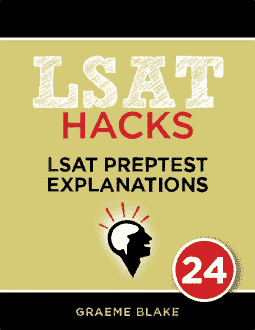QUESTION TEXT: Every student who walks to school goes home for lunch…
QUESTION TYPE: Sufficient Assumption
CONCLUSION: Some students with part time jobs do not walk to school.
REASONING: If you walk to school, you go home for lunch.
ANALYSIS: The argument is currently incomplete. There’s no link between having a part time job and not walking to school.
But if we assume that some students with part time jobs don’t go home for lunch, then they must not walk to school either. Here’s how to draw it:
(Some) Part time job ➞ don’t go home for lunch ➞ don’t walk to school
We’re not told anything about students with part time jobs. So the right answer has to mention them in order to connect them to the conclusion.
___________
- This doesn’t tell us anything about students who do have part time jobs.
- This doesn’t help. We want to prove some students with jobs don’t walk to school. Going home for lunch doesn’t prove much; it’s not a sufficient condition for anything.
- Same as A.
- CORRECT. This does it. If you don’t go home for lunch, you don’t walk to school.
- This tells us nothing about students with part-time jobs.
Recap: The question begins with “Every student who walks to school goes home for lunch”. It is a Sufficient Assumption question. Learn how to master LSAT Sufficient questions on the LSAT Logical Reasoning question types page.
More Resources for Sufficient Assumption Questions
- Conditional Reasoning Article: Learn about conditional statements.
- LR Diagrams Guide: Learn how to draw LR diagrams.
- Intro to Conditional Reasoning: Learn conditional reasoning basics.
- Intro Course lesson: This intro course lesson covers Sufficient Assumption questions.
- Mastery Seminar lesson: This LR Mastery seminar lesson covers sufficient assumption questions.


I found this question actually really difficult, how would you recommend making this intuitive? Despite being marked as a Level 2 question, even with the answer is hand the conditional logic is hard to write out and wrap the mind around.
Diagramming and conditional logic is difficult, so don’t feel discouraged! As with anything else, you need to practice enough diagramming until it becomes more intuitive to you. Here’s a free intro video to LR diagrams, which is taken from our LSAT course. You can also read Graeme’s article on conditional reasoning. The LSAT Intro Course and LR Mastery Course go in-depth on conditional reasoning. If you don’t feel like you fully have a grasp on the basics of conditional reasoning, I’d start there. If you’re already familiar/somewhat confident, I would recommend drilling question types that frequently require it (Must Be True, Necessary Assumption, Sufficient Assumption). Start off with easier ones and master those before you gradually build yourself up to the hard ones. Cross-check your diagrams with Graeme’s explanations until you’re getting 90+% right.
LSAT 72, LR1, Q24 is one where Graeme has extensively written out every component of the process. It’s a more complex/rare type (combines both some and most statement with conditional reasoning), but it’s a good one to practice if you want to master conditional reasoning (I’d recommend saving it until you’re a little more confident). Hopefully that helps!